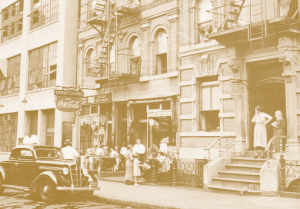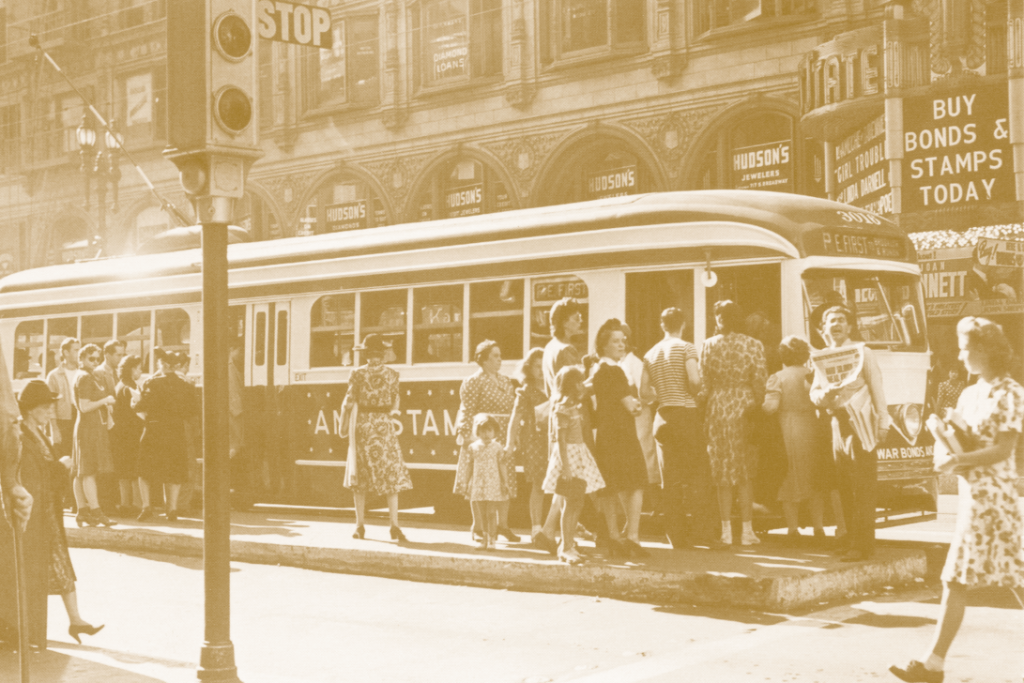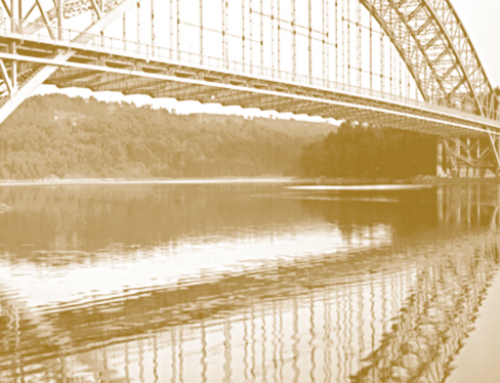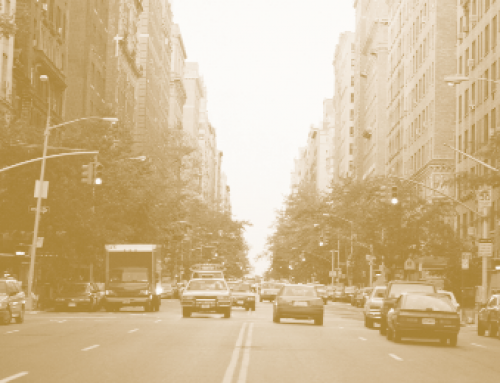The US faces significant challenges in transportation as its population grows and as it adapts its lifestyles to new technologies. Well-planned research will shed light on the issues while helping transportation systems contribute to a more productive economy, a stable and high-quality environment, and high quality of life.
Consider the following challenges:
A Growing Population
The US population continues to grow much faster than in other developed countries. The growth is uneven—little change in Midwestern states, explosive growth in the South and West. California alone expects to add ten million people by 2020, bringing its population to 45 million.
Nationwide, most growth will occur at the fringe of metropolitan areas. In California, just eight counties are forecast to account for more than sixty percent of the State’s total population growth over the next twenty years.
This population growth will affect every aspect of life, from jobs and housing markets to demands for public infrastructure and services to access to open space. Increased demands for transportation will require investment in new and improved facilities and services. To make those investments wisely, we need to better understand how growth will affect demand across modes and for both passengers and freight. We also need creative exploration seeking the best technology, operations, and management for moving people and goods efficiently and in ways that support high quality of life.
Demographic Change
Among the important population changes over the next 25 years will be the increased number of people over 65 years of age. Among these seniors, the fastest-growing group will be people over eighty. As Sandi Rosenbloom asserts elsewhere in these pages, despite declining vision and physical mobility, these older Americans will still be active, and most will still be driving. The need for strategies to support the travel of older Americans while providing safety for everyone is already pressing, and research to date has only begun to explore the issues and possible responses.
In fast-growing states the share of the population under eighteen will also increase. These younger Americans have busy schedules, but most cannot drive. In many areas the school buses that gave their parents a ride are no longer available, and parents provide most of their children’s transportation, often with some difficulty. Improved transit, walking, and bicycling options offer promise for better, safer, more secure transportation for kids; but here too we have barely begun to understand the needs and to identify potential solutions.
New Employment Patterns
Global trade, newly developing market links with South Asia, growth in high-tech industries, and e-commerce are just a few of the changes in the economy that have altered the size, scope, and location of work over the past few decades. Trends and forecasts suggest that changes over the next two decades will be equally dramatic.
Among all industries, services are the fastest growing, though there are state and metropolitan differences in their relative importance. In California, services are expected to account for one job in three by 2008, with large increases in jobs at both the low and high ends of the pay scale. Like population growth, employment growth will occur mostly in metropolitan areas, largely in outlying regional districts, where transportation networks are comparatively sparse. Research is needed to explore the application of new technologies, new operations and management systems, and new land use-transportation coordination.
Unemployment is often seen as an inner-city problem, but concentrations of unemployment occur in older suburbs and rural areas. Research on welfare-to-work and reverse commutes has paid off in identifying transportation strategies that help people find and keep employment, but more research will be needed as employment shifts continue.
Changing Location Patterns
The decentralization of population and employment reflects complex interactions among land markets, development constraints, personal and corporate preferences, and transportation facilities and services. Land availability and affordability are two interrelated factors that could have major impacts on location choices and hence travel patterns over the next decades.
The availability of land for development is determined not only by physical suitability (e.g., floodplains and slide zones might be considered unsuitable or too costly for housing), but also by local government policies on land protection, subdivision control, zoning, and development fees. Where land availability is restricted, land and housing prices (as well as commercial development prices) tend to be pushed upward. Developers may then turn to neighboring jurisdictions having fewer restrictions. Such spillover appears to be happening in many of the major metropolitan areas of the US. One result is increased commuting across metropolitan borders, with long commutes especially for first-time home buyers. Another result is the loss of farmland and habitat in outlying areas.
Some metropolitan areas and a few states are attempting to redirect growth to existing urban and suburban communities through strategic investments in infrastructure, including highways and transit, as well as through policy interventions such as fast-track approval for infill housing, transit-oriented development incentives, public-private development partnerships, and urban growth boundaries. The various strategies have received research attention in the last few years but findings are still tentative, and much more work remains to be done.
Changing Travel Patterns
Profound changes in personal and household travel have occurred over the past two or three decades. Among the most important are growth in nonwork travel and heavy increases in auto ownership and use.
Between 1969 and 1995, work-related travel fell from 36 percent to 18 percent of all trips nationally. In part, this is an accounting artifact: a trip home from work with a side stop at the store is counted as a trip from work to store plus a second trip from store to home. But with nonwork travel now accounting for 82 percent of all trips nationally, it’s clear that Americans are making huge numbers of trips for shopping, recreation, personal business, and social activities.
The growth in nonwork travel largely explains the rapid increases in per capita and per household VMT, since most of these trips are made by car. Growth in auto use also reflects increasing numbers of driver licenses, a willingness to continue to drive well into old age, near-ubiquitous auto availability, the location of activities in patterns that depend on cars for access, and the ease and convenience of auto trips compared to most other travel options. Transit, in the meantime, has lost market share, although gains have been seen in some markets. Transit use is especially prevalent among lower-income households in urban areas and among new arrivals to the US.
Understanding consumers’ travel patterns is a first step toward developing good transport services and is especially critical when considering policies intended to alter travel choices (e.g., bus rapid transit, employer transit-pass subsidy programs, parking charges or discounts). Unfortunately, many metropolitan areas are hampered by lack of data. National travel surveys are too sparse to provide usable data for metropolitan planning unless the metro area has paid for a larger sample; many areas have lacked the resources or foresight to do so. This is a matter for which not only is more research needed, but also where better data must be developed to support the research.
Changing Patterns Of Freight Transport
Freight transportation is critical to the economy but remains almost hidden from sight in most surface transportation policy arenas. Both truck and rail freight have undergone changes of revolutionary proportions over the last three decades. Deregulation was coupled first with containerization and consolidation innovations and then with just-in-time production processes and advanced logistics systems. Reflecting these changes as well as the changes in the nation’s economy and patterns of growth, trucking has gained market share for inter- city transport, especially for higher-value shipments. Rail continues to carry bulky and lower-value items, but has captured a significant market share in some areas by handling multimodal shipments. Air freight has also grown, as has intermodal truck- air transport. Water ports have been heavily affected by shifts in US trade partners as well as by the vast increase in ship size.
Security concerns and the disruption caused by the threat of terrorism have pointed out vulnerabilities in current practices.
Research can trace how changing patterns of economic activity, production processes, and patterns of demand affect freight transport. Work also is needed to help manage costs, efficiency, safety, and security.
New Technologies
Electronics and telecommunications innovations are transforming social and economic activity. New technologies that are smarter, more efficient, and friendlier to the environment than current ones are also transforming transportation.
Over the next two decades, the locations of businesses and households may be altered as telecommunications options improve. Already, businesses have become less dependent on physical proximity as electronic links have become reasonable alternatives to face-to-face communications. Freight carriers are heavy investors in new technologies and will increasingly use them to operate just-in-time, overnight, and same-day services. Individual travelers are using new technologies to pay tolls and fares electronically and to find the best routes to their destinations. And although full-time telecommuting is relatively rare, telecommunications systems do enable many workers to work at home at least part time.
Further changes are in the offing. Advanced traffic-management systems could increase road capacity while improving safety and respecting other objectives such as pedestrian comfort. Electric and hybrid vehicles, now only a tiny portion of the fleet, also could take off in the next two decades. Not only would that transform the debate over emissions and petroleum dependence, it also would challenge the gas-tax financing of highways.
Much work remains to be done on these promising technologies. But implementation will depend on public and private decisions about the technologies’ desirability and usefulness. So it’s critical to conduct research on potential demand for new technologies and on institutions, policies, and organizations needed for their deployment.
Concern For The Environment
 Environmental considerations both constrain transportation actions and offer important possibilities for environmental enhancement. Air and water quality, greenhouse-gas emissions, noise, endangered species and habitats, wetlands, parks and historic sites, agricultural land conservation, and community impacts are among the key factors that transportation planners must consider in designing projects. The nation has made substantial progress on some of these matters, but much more remains to be done. For example, largely due to technological improvements in vehicle emissions controls and regulation of industrial sources, air pollution has been substantially reduced nationwide, even with massive growth in activity. However, recent research suggests that we need to know much more about the toxicity and relative potency of various air pollutants, about air pollution modeling and forecasting, about modal emissions—how emissions vary with speed, stops, accelerations, etc.—and about the costs and benefits of various emission-control strategies.
Environmental considerations both constrain transportation actions and offer important possibilities for environmental enhancement. Air and water quality, greenhouse-gas emissions, noise, endangered species and habitats, wetlands, parks and historic sites, agricultural land conservation, and community impacts are among the key factors that transportation planners must consider in designing projects. The nation has made substantial progress on some of these matters, but much more remains to be done. For example, largely due to technological improvements in vehicle emissions controls and regulation of industrial sources, air pollution has been substantially reduced nationwide, even with massive growth in activity. However, recent research suggests that we need to know much more about the toxicity and relative potency of various air pollutants, about air pollution modeling and forecasting, about modal emissions—how emissions vary with speed, stops, accelerations, etc.—and about the costs and benefits of various emission-control strategies.
Similarly, progress has been made and there is reason to believe we can further improve water quality, wetlands protection, habitat, and general ecological health through careful design, construction, and management of transport facilities. Well-designed transportation projects can provide scenic views, enhance roadside ecology, recycle materials, calm traffic in neighborhoods, and reduce pollution. However, to accomplish this, more research is needed on issues ranging from ecosystem-scale impacts and opportunities presented by road systems to better understanding how road chemicals affect plants and wildlife. In addition, land use itself is increasingly seen as an environmental issue. Among the salient topics are the effects of transportation investments on land use, including induced demand, support of infill and other private investments, and the effects of land use patterns on travel demand (e.g., sprawl and auto dependence; jobs-housing imbalance and congestion; compact growth as a means of facilitating walking, biking, and transit use). All of these areas require research support.
Equity And Participation
TEA-21 called for increased opportunity for citizen participation. Concerns that minority and low-income populations are frequently underrepresented in public policy forums have led to directives to increase planning and outreach activities.
TEA-21 assigned significant planning and decision authority to metropolitan planning organizations (MPOs), in partnership with state transportation agencies, strongly signaling a shift in federal policy toward an expectation of greater involvement of stakeholders. Federal law and regulations also acknowledge the need to involve private sector interests (shippers, freight carriers, port users, etc.), which have been underrepresented in the past as well.
How is this being accomplished? New planning approaches encompass greater stakeholder and community involvement, and have broad scopes to better address interrelated land use, transportation, and economic investment issues. Agencies are testing public-private partnerships. Researchers and planners are developing methods for measuring performance of transportation projects from an equity perspective and for assessing their effects on diverse communities. But far more work remains. We know little about the efficacy of various planning approaches in improving transportation choices, increasing customer satisfaction, or improving system performance. Questions about distribution of costs and benefits are not well answered by available methods. Impacts of alternative policies and investments on freight transport are poorly understood.
ISTEA and TEA-21 vastly altered the institutional arrangements and policy objectives for surface transportation, but few studies have examined how the new institutional arrangements are performing. What MPOs have done with their new authorities is not well documented or evaluated. Few studies have examined what makes a public-private partnership for transportation planning a success—or a failure. How to integrate decision-making across disciplines (transport, environment, development) requires more work and best practices need to be identified and documented.
The Financing Dilemma
Funding shortfalls challenge the ability of transportation agencies to provide for current and projected mobility and access needs of the nation. The shortfalls are felt at every level of government, for capital projects as well as for operations and maintenance.
Possible ways to address the financing dilemma are to raise the gas tax, expand the use and “transportation capture rate” of other taxes (e.g., sales taxes, property taxes, excise fees), raise fares and fees, and increase private sector provision of transportation infrastructure and services. While these mechanisms are fairly well understood, there remain opportunities to further develop innovative methods of finance for transportation facilities and services and to find ways to provide transportation better/cheaper/faster. Research also could help identify and understand the conditions under which the public would support higher taxes and fees, and about the benefits as well as the costs of such higher expenditures.
Getting Research Done
Transportation has been spending a far smaller fraction of its resources on research than have other sectors of the economy. There is some reason to think that the low rates of research expenditure are in part responsible for the lack of innovation in some of our transportation business practice. Research needs to be done and disseminated widely if new ideas are to emerge and take root.
Funding for research—and for the data that researchers need—should be seen as an investment in better transportation systems. A mixed portfolio of transportation research should be the rule. Increasingly, the questions that need to be addressed are multidisciplinary. For example, we need science research on pollutant toxicity and potency, engineering research on improving traffic operations, and social science research evaluating the performance of programs and planning approaches, and designing and analyzing policy alternatives. Some of the work can be short term, but other issues require longer term and higher risk research.
University programs are a valuable resource for the conduct of research. University research orientation and capacity varies considerably, and some transportation programs are focused primarily on undergraduate education and technical assistance projects while others educate both undergrads and grad students and carry out both basic and applied research. Funding for transportation centers has been invaluable at building both kinds of programs and attracting high-quality students and faculty into transportation. Many university transportation centers have good relations with their state DOTs, MPOs, transit operators, local transportation agencies, and the private sector, and at least some of their work is carried out in cooperation with them.
But some independent research is also critical. For example, federal funding has allowed faculty members to do evaluation research on organizational design, policy design, and business practices. Independent evaluation of such topics can help elected officials improve public policy and help public agencies improve performance. Independent research is also the source of many innovations and inventions. A sound research program needs to allow researchers to develop new ideas on their own at least some of the time.
To sum up, we need more research on changing demographic, economic, and environmental conditions and their implications for transportation, more policy research, more evaluation research, and better data to support these efforts. New competitive research initiatives and a rejuvenated and better funded program of university research would pay off in better transportation outcomes.
Further Readings
Elizabeth Deakin, The Central Valley: Coping with Growth and Change (University of California Transportation Center: Working Paper no. 537, 2001).
Elizabeth Deakin and Songju Kim, Transportation Technologies: Implications for Planning (UCTC: Working Paper no. 536, 2001).
Elizabeth Deakin, John Thomas, Christopher Ferrell, Kai Wei, Manish Shirgaokar, Songju Kim, Jonathan Mason, Lilia Scott, and Vikrant Sood. Overview and Summary: Twelve Trends for Consideration in California’s Transportation Plan (UCTC: Working Paper no. 529, 2001).
Christopher E. Ferrell and Elizabeth Deakin, Changing California Lifestyles: Consequences for Mobility (UCTC: Working Paper no. 531, 2001).
Manish Shirgaokar and Elizabeth Deakin, California Housing Trends: Implications for Transportation Planning (UCTC: Working
Paper no. 532, 2001).
John V. Thomas and Elizabeth Deakin, California Demographic Trends: Implications for Transportation Planning (UCTC Working
Paper no. 530, 2001).
John V. Thomas and Elizabeth Deakin, Addressing Environmental Challenges in the California Transportation Plan (UCTC: Working
Paper no. 535, 2001).
Kai Wei and Elizabeth Deakin, Trends in California’s Jobs (UCTC: Working Paper no. 533, 2001).






